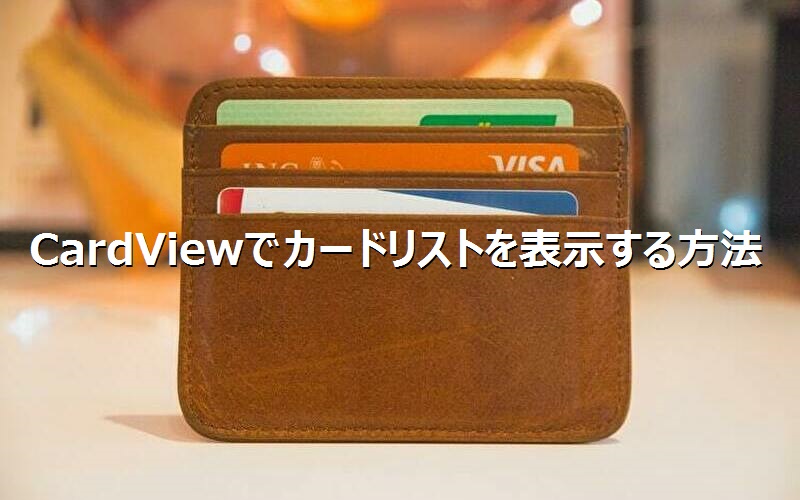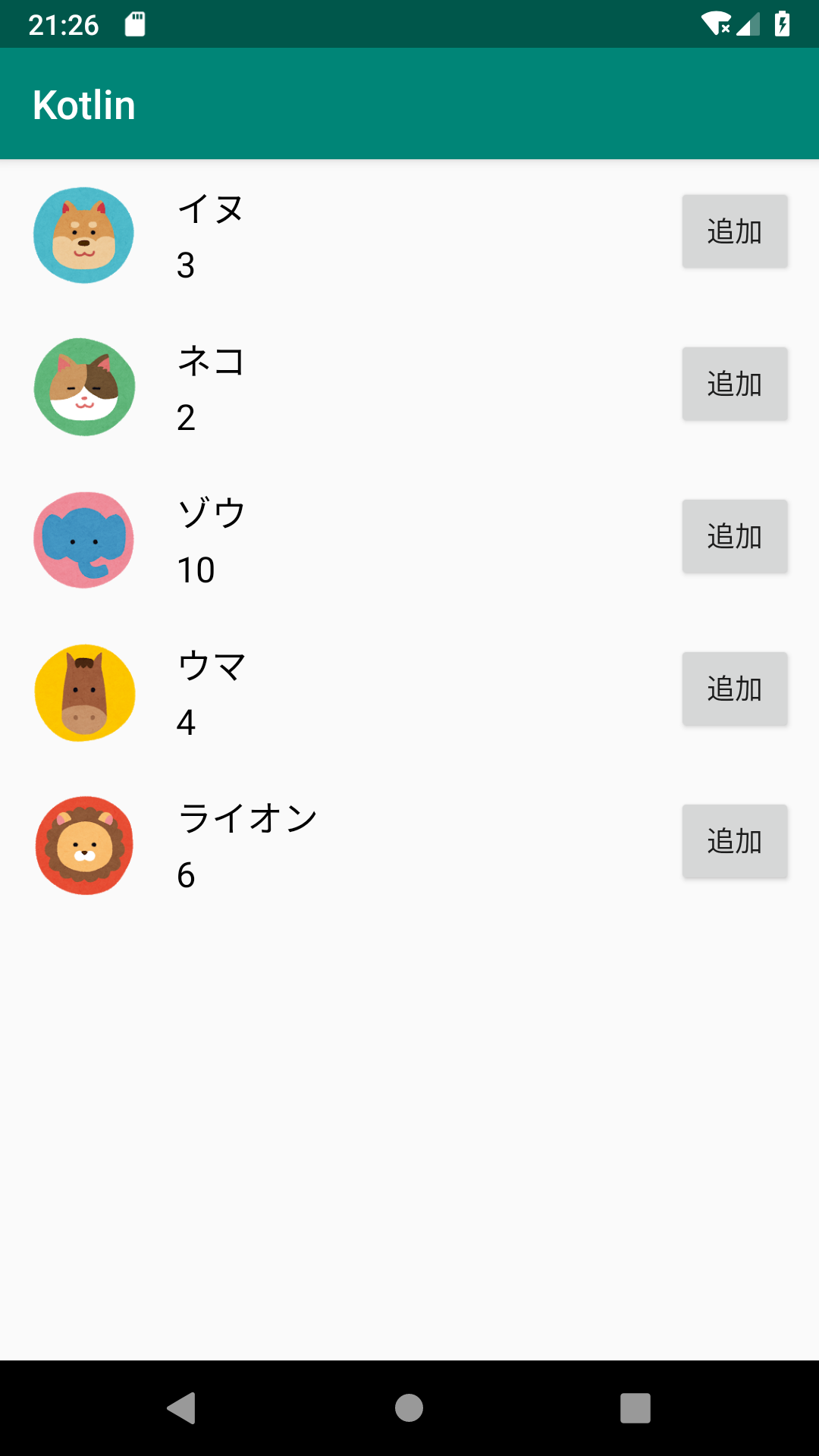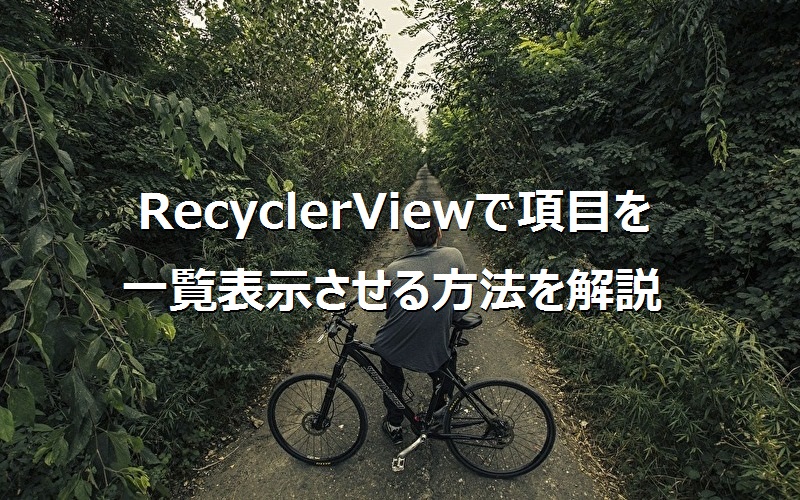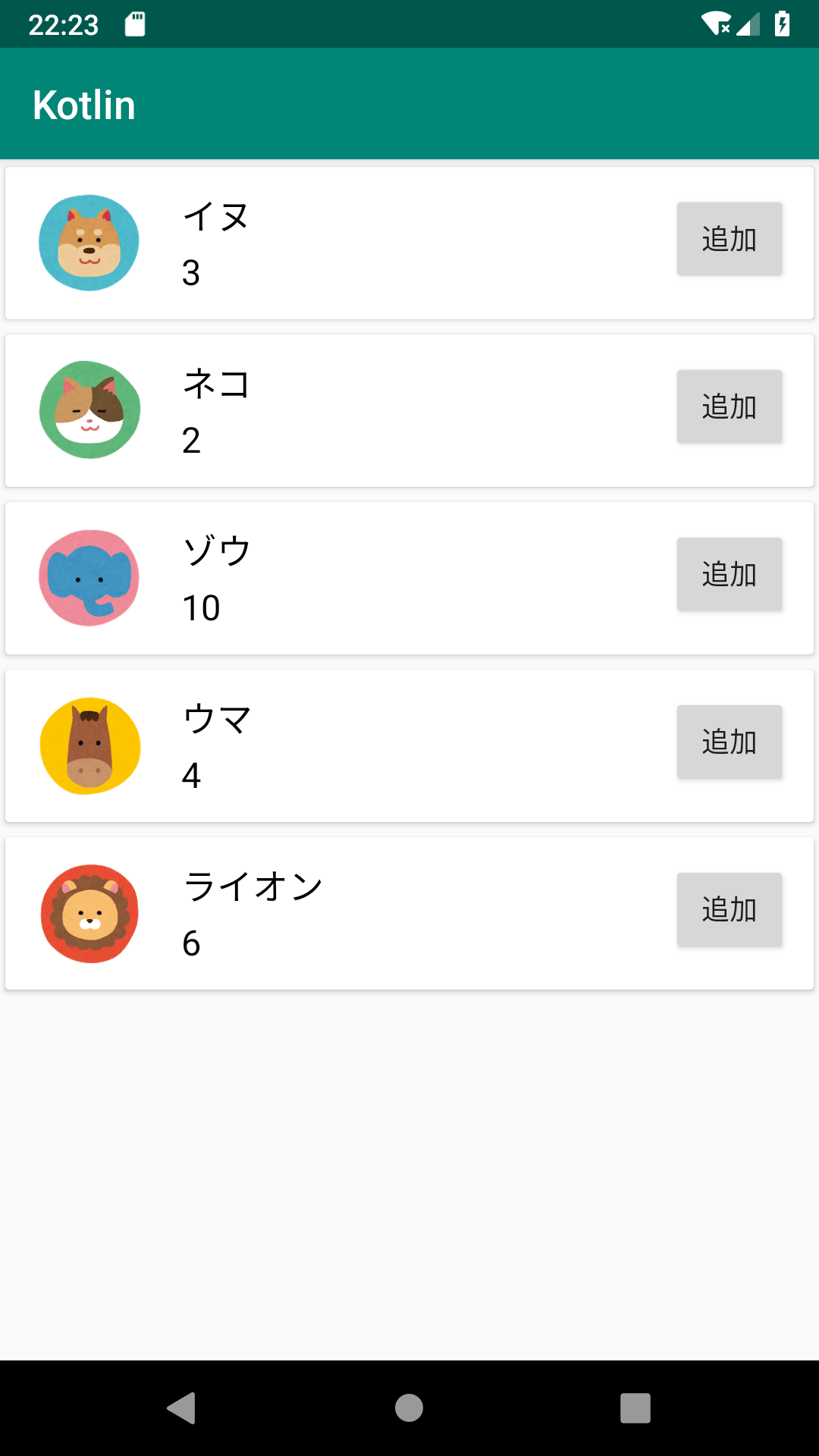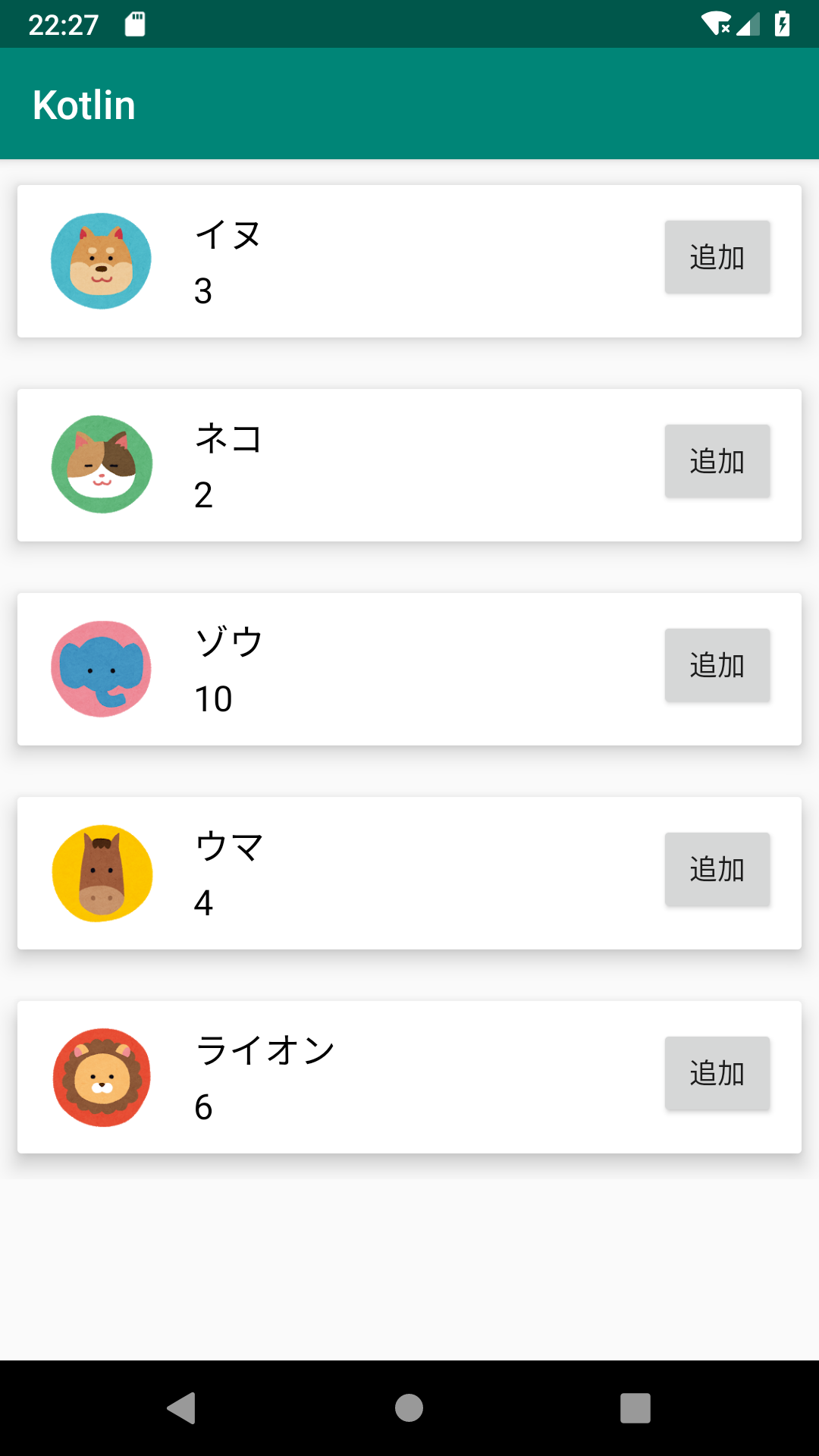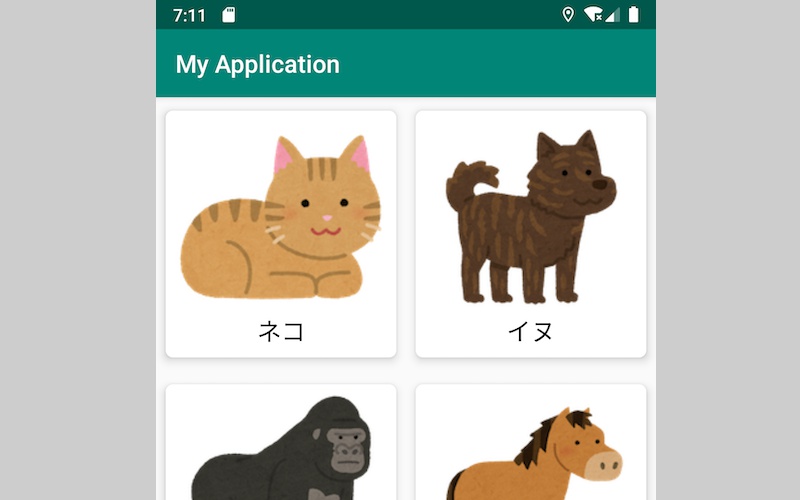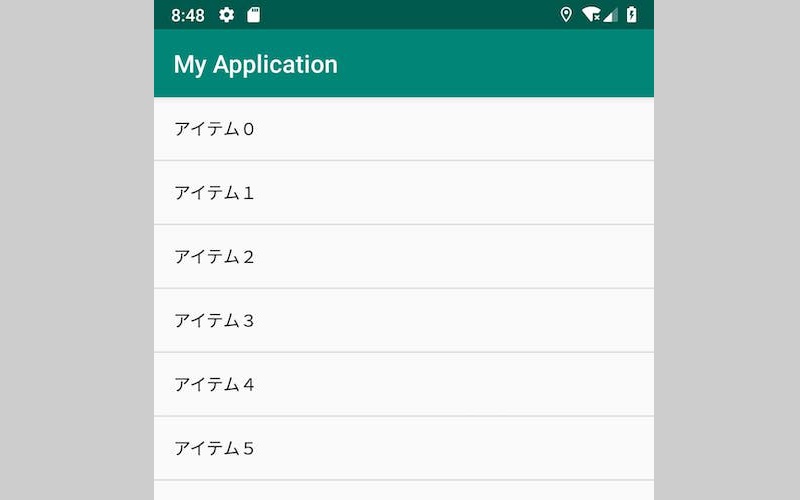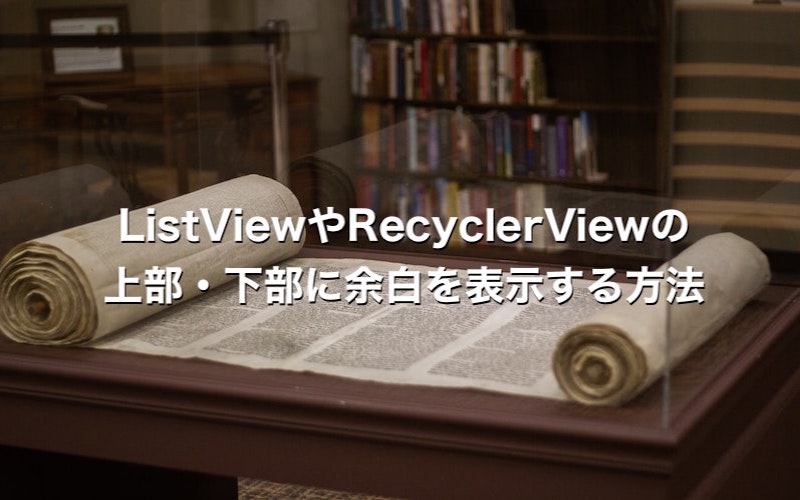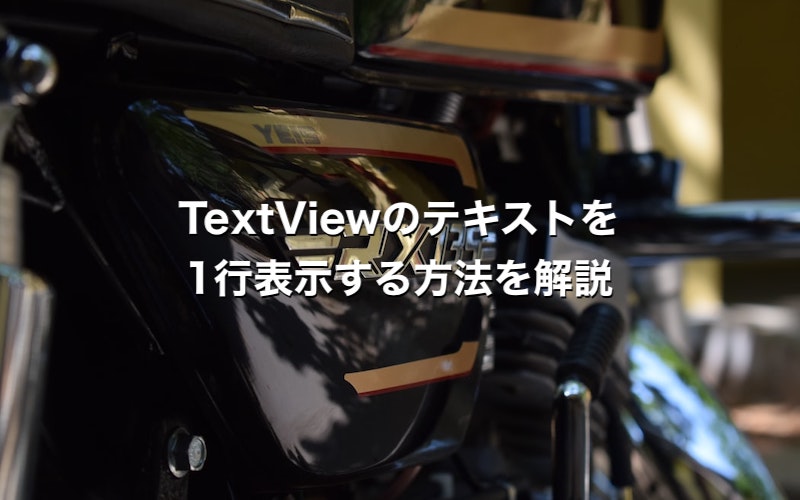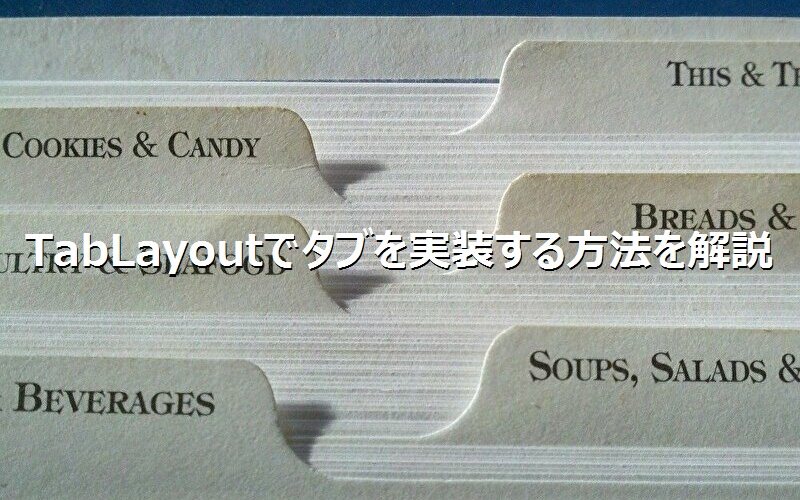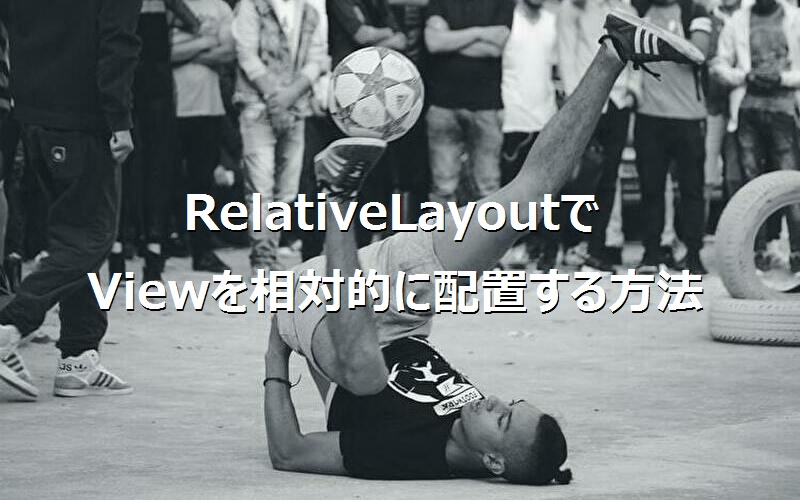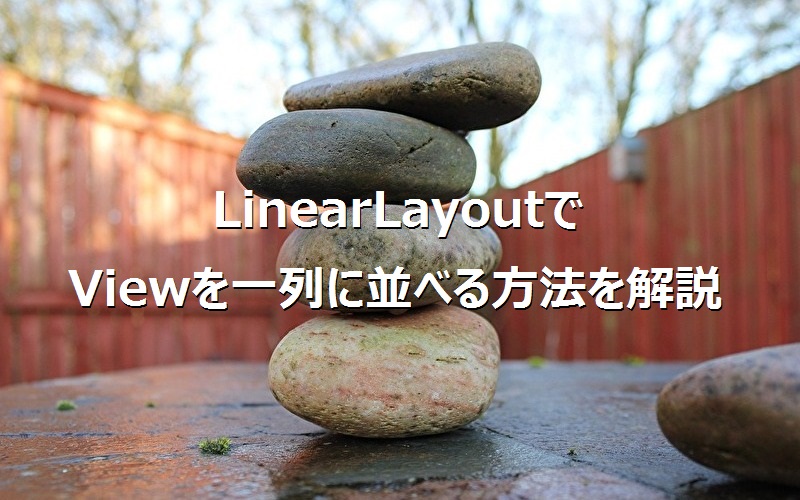公開日:2020/03/04更新日:2020/08/03
【Kotlin基礎】CardViewでカードリストを表示する方法を解説
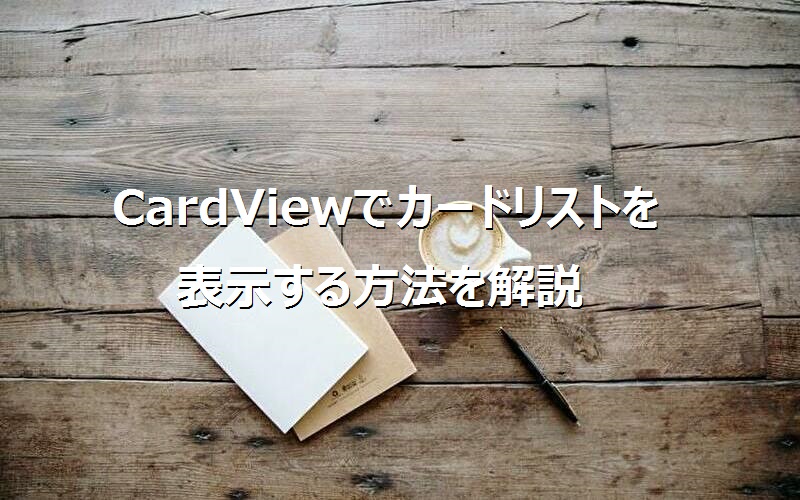
- Kotlinでカードリストを表示させる方法が知りたい。
データの一覧を表示する際、ただ線で区切って表示するのは味気ないですよね。
Kotlinでは、CardViewというViewを実装することで、簡単にカード型のデータ一覧を実装することができます。
本記事では、CardViewの実装方法から、カスタマイズする方法まで、サンプルコードを交え解説致します。
目次
CardViewでカードリストを表示する方法
ライブラリの追加
まずは、CardViewを使用できるようにするために、build.gradleにライブラリを追加します。
- build.gradle
dependencies {
implementation "androidx.cardview:cardview:1.0.0"
}
cardviewの最新のバージョンは、こちらから確認いただけます。
CardViewの実装
CardViewの実装方法を紹介するにあたり、以下のサンプルコードを使用致します。
- MainActivity.kt
- activity_main.xml
- CustomAdapter.kt
- list_item.xml
- Animal.kt
class MainActivity : AppCompatActivity(), AddAnimalListener {
lateinit var mAdapter: CustomAdapter
lateinit var mAnimalList: ArrayList<Animal>
override fun onCreate(savedInstanceState: Bundle?) {
super.onCreate(savedInstanceState)
setContentView(R.layout.activity_main)
val dog = Animal("イヌ", 3, R.drawable.dog)
val cat = Animal("ネコ", 2, R.drawable.cat)
val elephant = Animal("ゾウ", 10, R.drawable.elephant)
val horse = Animal("ウマ", 4, R.drawable.horse)
val lion = Animal("ライオン", 6, R.drawable.lion)
mAnimalList = arrayListOf(dog, cat, elephant, horse, lion)
val recyclerView = findViewById<RecyclerView>(R.id.recycler_view)
recyclerView.layoutManager = LinearLayoutManager(this)
mAdapter = CustomAdapter(mAnimalList, this)
recyclerView.adapter = mAdapter
}
override fun buttonTapped(animal: Animal) {
mAnimalList.add(animal)
mAdapter.notifyDataSetChanged()
}
}
<?xml version="1.0" encoding="utf-8"?>
<LinearLayout
xmlns:android="http://schemas.android.com/apk/res/android"
android:id="@+id/container"
android:layout_width="match_parent"
android:layout_height="match_parent">
<androidx.recyclerview.widget.RecyclerView
android:id="@+id/recycler_view"
android:layout_width="match_parent"
android:layout_height="wrap_content"/>
</LinearLayout>
interface AddAnimalListener {
fun buttonTapped(animal: Animal)
}
class CustomAdapter(private val animalList: ArrayList<Animal>, private val listener: AddAnimalListener): RecyclerView.Adapter<CustomAdapter.ViewHolder>() {
class ViewHolder(view: View) : RecyclerView.ViewHolder(view) {
val image: ImageView
val name: TextView
val age: TextView
val button: Button
init {
image = view.findViewById(R.id.image)
name = view.findViewById(R.id.name)
age = view.findViewById(R.id.age)
button = view.findViewById(R.id.button)
}
}
override fun onCreateViewHolder(viewGroup: ViewGroup, viewType: Int): ViewHolder {
val view = LayoutInflater.from(viewGroup.context).inflate(R.layout.list_item, viewGroup, false)
return ViewHolder(view)
}
override fun onBindViewHolder(viewHolder: ViewHolder, position: Int) {
val animal = animalList[position]
viewHolder.image.setImageResource(animal.imageId)
viewHolder.name.text = animal.name
viewHolder.age.text = animal.age.toString()
viewHolder.button.setOnClickListener {
listener.buttonTapped(animal)
}
}
override fun getItemCount() = animalList.size
}
<?xml version="1.0" encoding="utf-8"?>
<LinearLayout
xmlns:android="http://schemas.android.com/apk/res/android"
android:layout_width="match_parent"
android:layout_height="wrap_content"
android:padding="12dp">
<ImageView
android:id="@+id/image"
android:layout_width="60dp"
android:layout_height="match_parent" />
<LinearLayout
android:layout_width="0dp"
android:layout_height="wrap_content"
android:layout_weight="1"
android:orientation="vertical"
android:layout_marginStart="16dp">
<TextView
android:id="@+id/name"
android:textColor="#000000"
android:textSize="18sp"
android:layout_width="match_parent"
android:layout_height="wrap_content"
android:layout_marginBottom="4dp" />
<TextView
android:id="@+id/age"
android:textColor="#000000"
android:textSize="18sp"
android:layout_width="match_parent"
android:layout_height="wrap_content" />
</LinearLayout>
<Button
android:id="@+id/button"
android:text="追加"
android:layout_width="60dp"
android:layout_height="wrap_content" />
</LinearLayout>
data class Animal(
val name: String,
val age: Int,
val imageId: Int
)
このサンプルコードは、動物の画像、名前、年齢のデータを一覧表示させるものです。
詳しい実装内容に関しましては、以下のRecyclerViewに関する記事でまとめておりますので、あわせてご覧くださると幸いです。
では、CardViewを実装していきましょう。といっても、そんなに難しいことは致しません。list_item.xmlに実装した内容を、CardViewで囲うように修正します。
- list_item.xml
<?xml version="1.0" encoding="utf-8"?>
<androidx.cardview.widget.CardView
xmlns:android="http://schemas.android.com/apk/res/android"
xmlns:app="http://schemas.android.com/apk/res-auto"
android:layout_width="match_parent"
android:layout_height="wrap_content"
app:cardUseCompatPadding="true">
<LinearLayout
android:layout_width="match_parent"
android:layout_height="wrap_content"
android:padding="12dp">
<ImageView
android:id="@+id/image"
android:layout_width="60dp"
android:layout_height="match_parent" />
(省略)
</LinearLayout>
</androidx.cardview.widget.CardView>
実装したCardViewに対し、app:cardUseCompatPaddingにtrueを指定しております。こうすることで、カードの影が見切れないようにいい感じにカード同士の隙間を空けてくます。
CardViewのカスタマイズ
続いて、CardViewをカスタマイズする方法を紹介致します。
高さの変更
まずは、カードの高さ(奥行き)を変更する方法です。カードの高さは、app:cardElevationで変更できます。
- list_item.xml
<?xml version="1.0" encoding="utf-8"?>
<androidx.cardview.widget.CardView
xmlns:android="http://schemas.android.com/apk/res/android"
xmlns:app="http://schemas.android.com/apk/res-auto"
android:layout_width="match_parent"
android:layout_height="wrap_content"
app:cardUseCompatPadding="true"
app:cardElevation="8dp">
(省略)
</androidx.cardview.widget.CardView>
先ほどに比べ、より浮かび上がっているように見えますね。
角丸の変更
続いて、カードの角丸を変更する方法です。カードの角丸は、app:cardCornerRadiusで変更できます。
- list_item.xml
<?xml version="1.0" encoding="utf-8"?>
<androidx.cardview.widget.CardView
xmlns:android="http://schemas.android.com/apk/res/android"
xmlns:app="http://schemas.android.com/apk/res-auto"
android:layout_width="match_parent"
android:layout_height="wrap_content"
app:cardUseCompatPadding="true"
app:cardCornerRadius="10dp">
(省略)
</androidx.cardview.widget.CardView>
角丸が大きくなりましたね。
背景色の変更
続いて、カードの背景色を変更する方法です。カードの背景色は、app:cardBackgroundColorで変更できます。
- list_item.xml
<?xml version="1.0" encoding="utf-8"?>
<androidx.cardview.widget.CardView
xmlns:android="http://schemas.android.com/apk/res/android"
xmlns:app="http://schemas.android.com/apk/res-auto"
android:layout_width="match_parent"
android:layout_height="wrap_content"
app:cardUseCompatPadding="true"
app:cardBackgroundColor="#FFDDFF">
(省略)
</androidx.cardview.widget.CardView>
注意しなければいけないのは、android:backgroundでの背景色指定では、背景が変わらないということです。CardViewの背景色を変更したい場合は、app:cardBackgroundColorを使用するようにしましょう。
まとめ
- CardViewを実装するには、ライブラリを追加する
- カード同士の隙間を空けるには、app:cardUseCompatPaddingにtrueを指定する
- カードの高さは、app:cardElevationで変更できる
- カードの角丸は、app:cardCornerRadiusで変更できる
- カードの背景色は、app:cardBackgroundColor
関連記事
